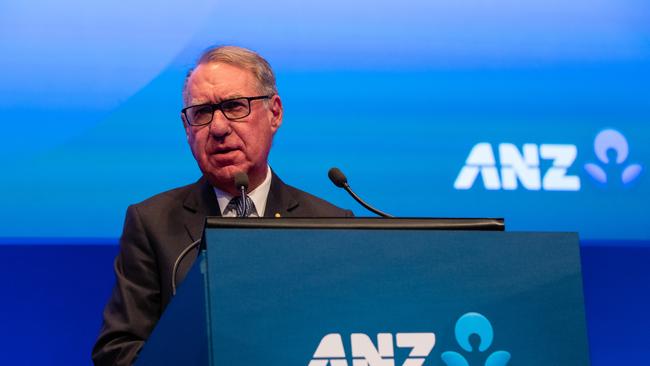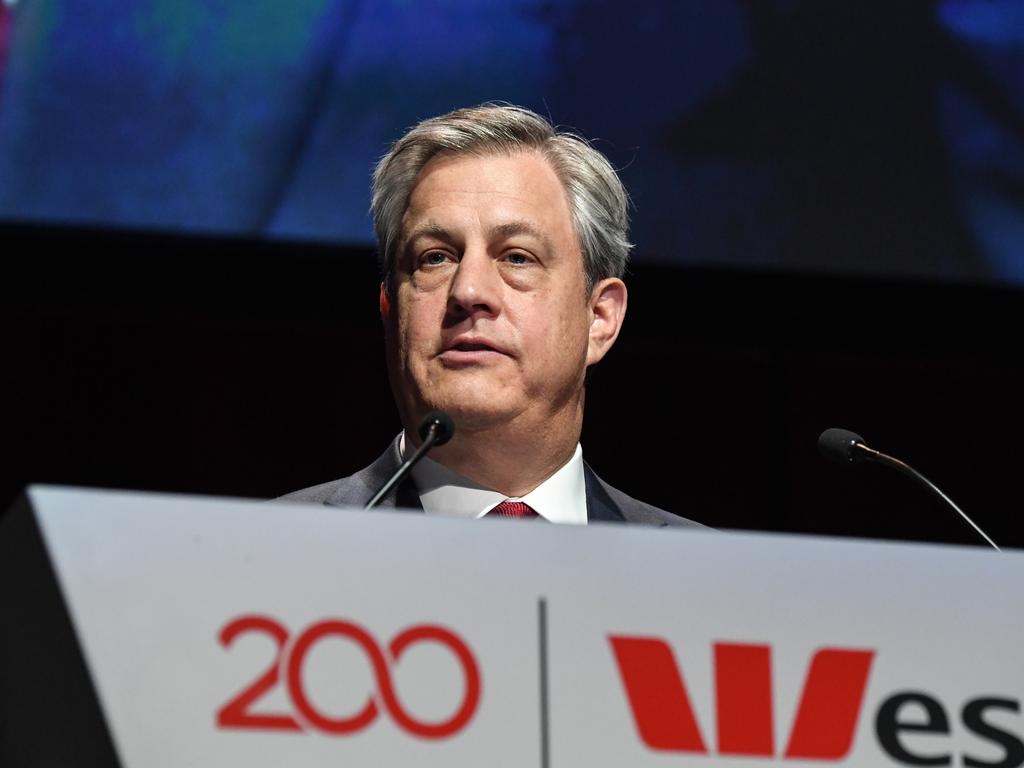ANZ chairman David Gonski lays out how bank failed customers
A focus on short-term fixes was just one of the ways ANZ failed its customers, says chair David Gonski.

A focus on short-term fixes, a lack of accountability and a conditioned acceptance that it’s “all too hard” or “the way it’s always been” are just some of the ways ANZ has failed its customers, chairman David Gonski has admitted.
In a statement released to the market today, Mr Gonski revealed the extent of the bank’s failings as exposed by the cultural and governance self-assessment it submitted to the banking regulator last year.
“We found a compliant culture with strong loyalty to teams — often at the expense of the broader group. There was also a greater focus on short-term fixes and what it meant to be ‘customer-centric’ lacked clarity and structure.
“Accountability for outcomes across ANZ, particularly in relation to inaction or poor performance, often lacked clarity below the senior executive level,” Mr Gonski said.
Fragmented infrastructures, drawn out processes and teams in silos were also identified in the review, while non-financial risk management lacked maturity, he admitted.
“We have a culture where our teams do not always speak up. When permission or a process is ambiguous we can be conservative in our decision making. Often this leads to an outcome where we do nothing. This needs to change,” Mr Gonski said.
APRA in 2018 asked 36 of the country’s largest banks, insurers and superannuation funds to complete self-assessments after it conducted an independent review of Commonwealth Bank’s culture and governance.
The Commonwealth Bank report was made public, while National Australia Bank released its self-assessment in November 2018. Westpac followed suit by making its assessment public last month.
ANZ Bank has come under heavy criticism for failing to join its peers in releasing its self-assessment in full. No other financial institutions have released their assessments.
“APRA requested these self-assessments on a confidential basis to ensure institutions responded in a way that was full and frank. We have respected that request, as well the fact that people contributed on that basis, and will continue to do so,” Mr Gonski said.
While declining to release the full report, Mr Gonski provided some insight into how the board fell short in its duties and its plans to address the failings.
“We are determined the board will improve the way it questions management — and itself — in relation to the question of our long-term ambitions. While it is noted many Australian institutions like us have a tendency to focus on the short-term, that is no excuse,” he said.
“In terms of complexity and accountability, while the board acknowledges the work committed to these issues by management, the board will keep pace with these matters and provide effective oversight of management’s work and progress. It is proposed management will report quarterly to the board on progress in relation to the actions in the road map.”
The bank plans to further simplify its business, products and processes to reduce complexity and improve customer outcomes, he said, and is changing how it rewards staff including scrapping bonuses in favour of an incentive based on the overall performance of the group.
It will also expand its remediation team to cut down on the time it takes to investigate issues and issue refunds.
“We know there is a significant amount of work ahead and the ultimate measure of success will be the removal by APRA of the additional capital overlay,” Mr Gonski said.
APRA last month slapped a $500 million additional capital requirement on ANZ, Westpac and NAB after it found each had fallen short on their risk governance.
The banks will be forced to hold the additional capital until they have strengthened their risk management, and closed gaps identified in their self-assessments. In May last year it applied a $1bn dollar capital add-on to Commonwealth Bank following its inquiry into the lender.
•Seperately New Zealand’s financial regulator yesterday said ANZ Bank New Zealand failed to properly disclose a material transaction involving the sale of an Auckland property to the wife of the bank’s former New Zealand chief executive David Hisco.
The Financial Markets Authority said the sale should have been disclosed in the bank’s 2017 financial statements as a related party transaction
ANZ said it disagrees with the FMA’s finding “as it considers the transaction not to be material information on the basis that this disclosure could not influence the economic decisions of the users of financial statements”.




To join the conversation, please log in. Don't have an account? Register
Join the conversation, you are commenting as Logout